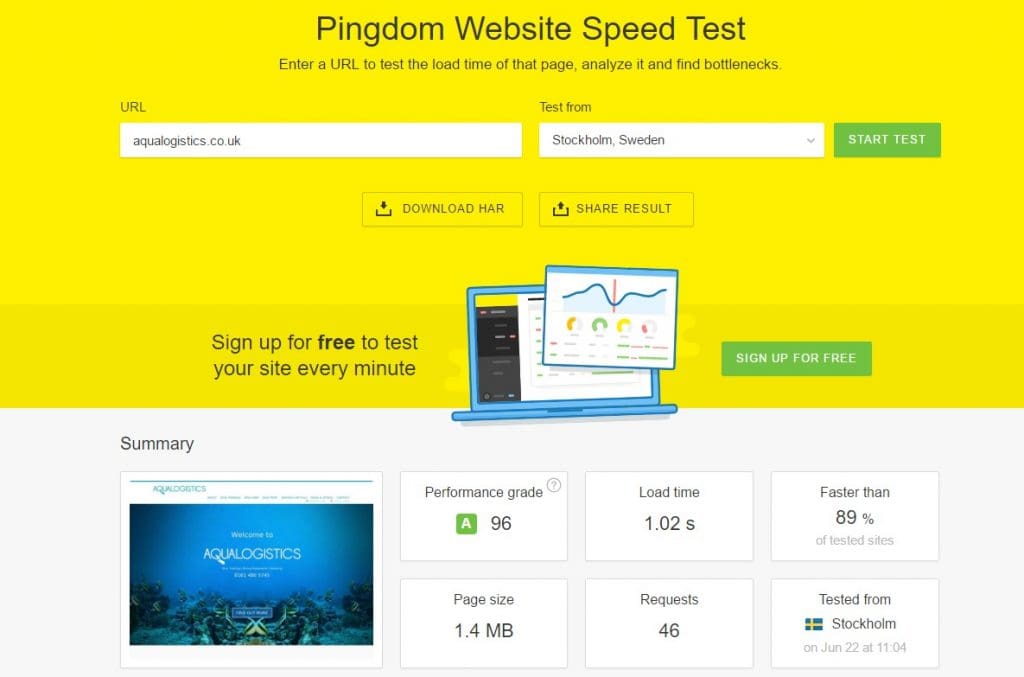
Speeding up your website may not be the most exciting task in your marketing plan or one that anybody looks forward to doing, but it may be the single most important task on your to do list.
The first thing to check is do you need to bother? This is easy to do, just head over to Pingdom (https://tools.pingdom.com/) or GTmetrix (https://gtmetrix.com/) enter your URL and wait for the results to appear. Both services are free and will only take a few seconds to let you have a report with a quality rating. Pingdom will also let you know how well your site matches up against other sites they have tested.
If you’re not rating A’s or B’s on most of the categories then there are probably a few steps you can take quite easily to improve things. Here are a few we would suggest:
- Website hosting is a competitive business so if your site is slow then talk to your current host about any steps they can recommend to speed things up. If they don’t respond to your liking then consider moving. We recently saw a host we had previously been very happy with have some significant performance reductions so moved hosts, with an immediate speed improvement.
- Specialist hosting is worth investigating if you don’t use it already. If you have a large ecommerce site which is business critical then talking to a host such as UKFast (we have no links to them so this is not a PR plug) is well worth your time. They can tailor a package to your needs. Similarly if you have a “company brochure” style website based on WordPress, then there are several specialists out there who can give you excellent performance and support at a reasonable cost.
- Images – the number 1 self-inflicted site killer for self-managed websites is oversized images. As smartphones and digital cameras have added quality they have also added megabytes. The average image taken is now a much better quality in terms of size than you need for most regular web images. By cropping and resizing before you upload the original image you save your web visitors browser having to do the work when they view your web page. Most speed reports we look at will list lack of image compression as one of the first problems.
- Content Delivery Networks (CDN) – These are fast superpowered networks that can help boost your site speed if you are looking to continue to tune your site’s performance. They work by storing webpages across their network and then delivering it based on the users geographic location. By shortening the chain and using powerful servers they can perform better than your own host. Cloudflare is an example and has some additional benefits such as security improvements and traffic surge protection.
If you feel a bit overwhelmed by it all then we would be happy to give you some pointers as a start. Just drop us a line with your website URL and we can give you a quick opinion.
More Stories
Bernard Edmunds Explains Why Men Matter
Men Matter’s chairman, Bernard Edmunds, talks about how the charity appeal raises awareness of men’s cancers.
Read MoreSilence Sells
The presentation of a website is the key to its perception. We understand how crucial good web-design is and thought we’d share one of those…
Read MoreDoes your business need PR? In short, yes it does!
The Chartered Institute of Public Relations’ definition of PR is: “Public Relations is about reputation – the result of what you do, what you say…
Read More


